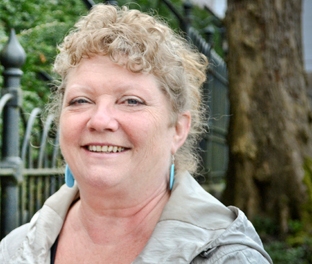Nobody asks about sexual harassment
“Asking about sexual harassment is one of our legal duties,” says the Equality and Anti-discrimination Ombud.
Several universities and university colleges have removed the term “sexual harassment” from their guidelines and employee surveys. The reason: They cannot follow up the problem.
Many of the universities and university colleges we contacted either have routines, guidelines, contact persons or action plans for combating sexual harassment. But asking about sexual harassment is not as straightforward:
“No, we don’t ask about it on the employee survey since the responses are anonymous, which means we couldn't do anything about the matter anyway,” says the Norwegian University of Science and Technology (NTNU).
“We chose not to include sexual harassment in our anonymous employee survey, both because it’s difficult to formulate a question that captures it in an effective way and because the person involved must be followed up, which is impossible in an anonymous survey,” says the Norwegian University of Life Sciences (UMB).
Better before
A well-publicized case from the University of Bergen: Five women accused a professor of sexual harassment. One of the women says she was raped on a study abroad trip. The University of Bergen fired the man on the spot in 1997. The Supreme Court decided that the male professor would not get his job back. He also had to pay the government NOK 279,000 in legal fees.
It was in 1996 that the University of Bergen (UiB) drew up ethical guidelines for the relationship between students and supervisors, focusing on protection against sexual harassment. Three of the seven points in the guidelines explicitly addressed sexual harassment or unwelcome sexual attention.
Now 15 years has passed. UiB adopted new guidelines at a meeting of the University Board on 31 May. The term “sexual harassment” has been deleted. Now it is described like this: “The supervisor has a particular responsibility not to place the student/the candidate in a vulnerable situation. Further: “The supervisor must not use his/her academic knowledge and authority to offend or oppress (...)”
Sexual harassment must be highlighted
“Although sexual harassment has been removed from the ethical guidelines on the student-supervisor relationship, we have three different measures in the recently adopted action plan. These measures consist of drawing up guidelines for dealing with harassment between students, and guidelines for filing and handling complaints made by employees and students. The third new measure is designed to prevent all forms of harassment and to improve information about and the support system around sexual harassment.”

This is according to Anne Marit Skarsbø, the Gender Equality Advisor at UiB. She explains that UiB used to focus a great deal of attention on sexual harassment. They have implemented campaigns, activities to shape attitudes and a theme day on sexual harassment, in addition to conducting a working environment survey.
“We mustn’t forget about sexual harassment. When an issue becomes ill-defined, it’s difficult to do anything about it,” says Skarsbø.
Rely on reporting routines
The situation is the same for several institutions in the higher education sector. The employees are asked about the working environment during performance appraisals and on employee surveys, but few of them address harassment directly. Even fewer mention sexual harassment: None of the 10 institutions of higher education we asked include questions about sexual harassment in their performance appraisals. In the employee surveys, three institutions ask about harassment in general and one asks directly about sexual harassment. The last mentioned has given the survey to the administrative staff, but not to the academic staff.
For many universities and university colleges, their only tools for preventing sexual harassment are reporting routines and an HSE handbook. Only a handful of institutions have compiled an overview of sexual harassment incidents, so most of them cannot account for the extent of the problem. While most institutions have reporting routines or action plans, very few of them ask about sexual harassment during performance appraisals or on employee surveys.
“It’s up to the individual manager and the individual employee to decide what issues should be addressed in the performance appraisal,” says the Norwegian Police University College.
“Employees are given the opportunity to talk about their working relationships and their feelings about the working environment,” says the University of Oslo.
When asked why sexual harassment is not mentioned on the employee survey, Sogn og Fjordane University College responds:
“We haven’t actually thought about it. We’re more general in our approach. We don’t ask explicitly about sexual harassment or keep statistics on it. But when cases arise, we have clear reporting routines.”
Two of three are harassed
Section 8a of the Gender Equality Act defines sexual harassment as “unwelcome sexual attention that is offensive to the object of such attention”. The prohibition against sexual harassment is enforced by the courts. The Equality and Anti-discrimination Ombud is not permitted to comment on whether or not sexual harassment has taken place, but the ombud can take a decision on whether a breach of duty to prevent or stop sexual harassment has occurred. The employer’s duty is formulated in the Act as follows: “The employer and management of organizations or educational institutions shall be responsible for preventing and seeking to preclude the occurrence of harassment in contravention of provisions of this Act within their sphere of responsibility.” The ombud can also take a decision on whether a person who has reported sexual harassment has been the victim of unlawful retribution, such as being downgraded at work.
Section 4-3 of the Working Environment Act states the following about the psychosocial aspect of the workplace: “Employees shall not be subjected to harassment or other improper conduct.”

Despite the legislation, there appears to be a general lack of attention paid to the topic. The research community and the media also show little interest in sexual harassment. This is according to Morten Birkeland Nielsen, a researcher at the National Institute of Occupational Health.
“This contrasts with the number of people who are subjected to actions that could be perceived as harassment,” Nielsen points out.
“It’s been shown that sexual harassment absolutely does occur in academia. Even though far from everyone views themselves as a victim of sexual harassment, on a nationwide basis about 20 percent are subjected to actions that could be perceived as harassment. That’s a lot. This is why it’s crucial that knowledge about sexual harassment reaches everyone,” he emphasizes.
“It’s unfortunate if they don’t raise the issue. It’s unfortunate both for documenting and for preventing sexual harassment if employers don’t investigate the phenomenon,” Nielson believes.
Possible violation of the law
The Equality and Anti-discrimination Ombud does not understand the scepticism towards asking about sexual harassment on employee surveys. Employers have a duty to prevent sexual harassment as well as to conduct an investigation when sexual harassment is reported. The ombud believes that asking about sexual harassment on employee surveys promotes gender equality and helps to ensure that the institutions of higher education fulfil their legal duty in this regard.
“It’s important to acquire knowledge about sexual harassment within the organization. Employee surveys are a tool for gaining this insight,” says the ombud.
If the institutions don’t use employee surveys, the ombud thinks that alternative methods to learn more about sexual harassment must be used.
The manager's responsibility
“What can the organizations do to prevent sexual harassment?”
“The top-level managers are important. They have the overall responsibility for what happens in the workplace. This is why they play a crucial role in preventing sexual harassment. They are also key role models and representatives of the organizational culture. The signals sent by the managers have a huge impact on the attitudes, values and actions that prevail throughout the organization. It’s also by having a clear, direct policy for what is allowed and what is not that it’s possible to tackle and solve problems. A clear policy serves as a guidepost for employers and makes it easier for potential whistleblowers to report unlawful actions,” says Birkeland Nielsen.
“Is it problematic to use anonymous employee surveys when employers have a duty to follow up sexual harassment cases?”
“No, employee surveys can form the basis of further studies. Even though they don’t show where the problem lies, they can be used as a starting point for increasing focus on the problem and creating a basis for measures against sexual harassment,” he says.
Asks only in general terms
The University of Stavanger (UiS) began a targeted employee survey for all staff members in 2009. The survey is repeated every other year, and questions about bullying and harassment are among the topics included.
“Of course we have to ask. Ideally the employee survey would be more precise – for example, that we could see the extent of harassment at the departmental level. However, there’s nothing to suggest that we can’t include all forms of harassment, including sexual harassment, on an employee survey,” says Gunnar Baustad, a legal adviser at UiS.
When UiS asked its employees about bullying and harassment for the first time, the results showed that about 10 percent had been harassed or bullied in the past six months. Roughly 22 percent reported that they had observed others being subjected to such behaviour in the past six months. Afterwards, UiS launched a number of measures.
“A mandatory course for managers and an optional course for all employees, as well as annual HSE courses with a review of reporting routines, are just some of the measures at UiS. Guidelines and routines for dealing with sexual harassment are publicized and explained,” he explains.
When UiS conducted the survey for all employees for the second time, the percentage of those who had felt bullied and/or harassed, or who had witnessed such behaviour, had declined. The first group was now about 8 percent and the other group roughly 18 percent.
Baustad believes that the university could have done more to prevent sexual harassment if the employee survey had shown results at the departmental level rather than at the institutional level. Figures should be published at the institutional level, but the leadership in the departments where harassment is reported should be aware of the results from their own units and get targeted help based on the extent of the problem.
“If it’s shown that some departments have more extensive problems than others, it will be easier to direct the resources exactly where they’re needed,” Baustad believes.
Translated by Connie Stultz.
The Gender Balance in Research website is putting the spotlight on sexual harassment in academia. This is the first in a series of articles.A link to the other articles is available below.
Several studies of sexual harassment were conducted in the 1990s, but in subsequent years there has been little research on the topic, including internationally. The two most recent studies are unique to the Norwegian context in the past 10 years:
- M. B. Nielsen and S. Einarsen (2012): Prospective relationships between workplace sexual harassment and psychological distress.
- Morten Birkeland Nielsen, Brita Bjørkelo, Guy Notelaers, Ståle Einarsen (2010): Sexual Harassment: Prevalence, Outcomes, and Gender Differences Assessed by Three Different Estimation Methods.
The National Institute of Occupational Health held a seminar on bullying and harassment in working life on 7 June 2012. The seminar can be viewed on WebTV and Birkeland Nielsen’s presentation can be downloaded (only in Norwegian).
See which laws the Equality and Anti-discrimination Ombud enforces, including Section 8a of the Gender Equality Act on sexual harassment. Also see Section 4-3 of the Working Environment Act on the requirements related to the psychosocial aspect of the workplace.
- Seminar presentation: Bullying and harassment in working life
- Prospective relationships between workplace sexual harassment and psychological distress
- Sexual Harassment: Prevalence, Outcomes, and Gender Differences Assessed by Three Different Estimation Methods
- Section 8a of the Gender Equality Act: Gender-based harassment and sexual harassment
- Laws and regulations




